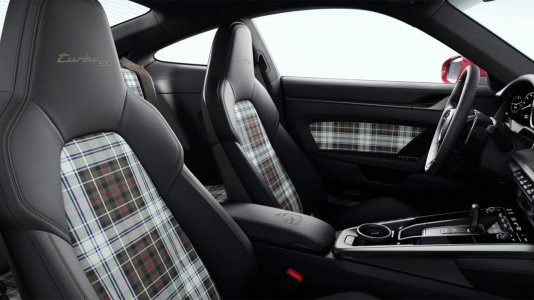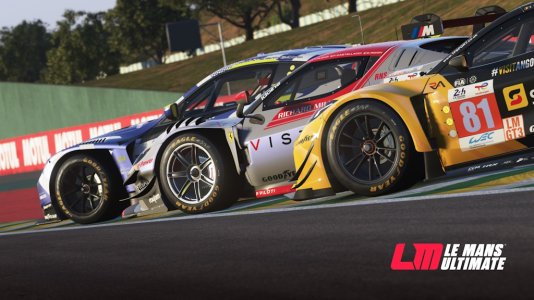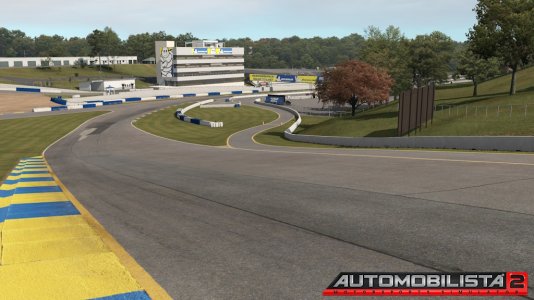Didn't want to put the questions into my long story post...
Would you share the worksheet with us or did you or the creator put too much work in to share it with anyone?
I got some worksheets and had a play with all kinds of stuff on my own but I'd be very interested to have a look at how others do it!
Maybe I could fix the channels and math for AC and send it back to you at the end of my holidays

Would you or
@JoelK be willing to post a mini-crash-course for us about how to read the data and what to do?
Not really about the knowledge you'd get from engineering books. More like what actually means what.
Only the AC specific stuff...
Like what ride height value actually means the floor touching the tarmac and what the toe values translate to.
Edit: like with camber, where 0° doesn't mean the tyre being vertically but instead you have this weird equation of body roll angle and camber angle relative to the chassis. And then in AC a vertical tyre not meaning maximum grip but instead you have another equation that determines the "perfect angle" that you can't see in motec but have to use a live session and camber extravaganza...

Examples:
Looking at a lap I did during some holidays in March 2021 after a Donington Race where I practiced and worked on my setup until I would've gotten pole in that race:
Do you guys spot anything that looks "wrong" instantly? I gave up looking for info on this after some point and concentrated on having fun and getting a better driver.. But the itch is there!
View attachment 581531
View attachment 581532
View attachment 581533
And since you should always give something when asking for something:
Setup is attached, MoTeC file is in my dropbox:

www.dropbox.com
First thing what I always check is the damper histogram, and how I've understood it is that:
1. It needs to be somewhat symmetrical (''In a theoretically ideal setup, the high-speed compression and rebound numbers are identical, and the low-speed compression and rebound numbers are identical.'')
2. Is to graph too peak-y or not ?
(you get the point

)
In AC, from my experience, you just gotta find the ratio where the dampers work nicely together. Then when you wanna adjust, for example the rear rebound, then you adjust the bump accordingly.
(I've always found best having bump 1-3 clicks lower than the rebound at the rear, front can sometimes be the other way around. So when I wanna stiffen the rear rebound 2 clicks and they're 6-8 before, then I'll go for 8-10 or 7-10 and that usually does the job)
For FST dampers same principles apply, usually in AC they're way too soft, so I'll stiffen then up a bunch.
Second thing I check, if the ride height match the settings I've set them at.
Most important thing is the transitions, so do I have way too much front dip on the brakes (can cause either lift-off oversteer or just general under-stability under braking)
or do I have the car squatting (explained in the post above).
Quick fix for the dip is to stiffen the front bump or reduce the front suspension travel to where it kinda rides the bumpstops under braking. Quick fix for the squat is explained above. For F1/LMP1 you can manage these issues by adjusting the heave springs/dampers.
I've still yet to find a way to see where the car bottoms out completely through telemetry and for that I've always went by feeling it. Maybe
@Enzo Fazzi has solution for this.
For the Toe settings, I only check if they're roughly where I set them at.
If you have a soft car it can affect especially the front toe at the straights when front is lifting up a bit, so then that causes the front negative toe to increasing a bit.
This can affect (very) minimally to top speed, and fixing this issue can ruin the balance of the car elsewhere, so generally my advice is to not pay attention to it.
I just want to have the rear toe where I want it, and it doesn't fluctuate as much as the front does. Little increase/decrease in the rear also affects the handling way more than the front toe, so that's why I focus more on that (and It's a lot easier to check)
But yeah, as a big disclaimer: I'm in no means an engineer or try to pretend like one, these are just things I've learned over the years by reading some stuff, watching some videos and talking to people who have invested more time into learning these things more properly than I've did (Like Tariq for example, that dude is a walking engineering book even though he also isn't a mechanical engineer).
Take everything I say with a grain of salt.









